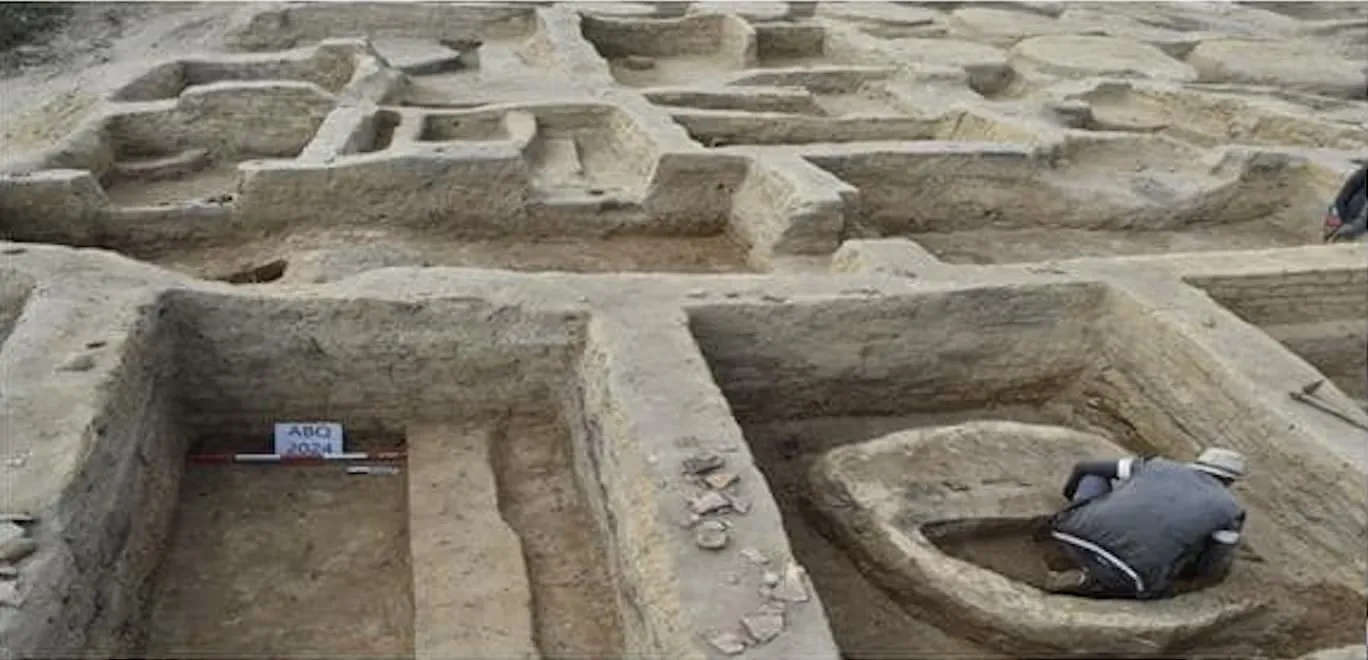Archaeological discovery in Egypt, where the archaeological mission of the Supreme Council of Antiquities led by archaeologist Ahmed Said Al-Kharadli has uncovered a set of mud-brick architectural units used in ancient times as a military fort, which housed soldiers and warehouses for weapons, food and groceries. The structure dates back to the New Kingdom period (c. 1550 B.C.E. - c. 1069 B.C.E.), and was found during archaeological excavations at the site of Tal Al-Aqbain in Buhayra Governorate (Nile Delta region).
The historical and archaeological importance of the fort is reportedly confirmed by the discovery of a bronze sword of Pharaoh Ramses II and other archaeological finds, mostly personal effects belonging to soldiers. Mohamed Ismail Khaled, secretary-general of the Supreme Council of Antiquities, explained that this fort served as a military outpost of the ancient Egyptian army along the Western Military Road, protecting Egypt’s northwestern borders from invasions by Libyan tribes and the mysterious Sea Peoples, the modern name for the peoples who invaded the Near East, attacking several Mediterranean cities, between the 13th and 12th centuries BCE.C. Khaled noted that the architectural units are meticulously designed, divided into two identical groups separated by a narrow passage: this regular arrangement demonstrates the ingenuity of ancient Egyptian engineers in adapting the land to serve a variety of practical purposes.
For his part, Dr. Ayman Ashmawy, head of the Egyptian Antiquities Branch at the Supreme Council of Antiquities, explained that preliminary studies of the archaeological finds confirm the use of some of the architectural units as warehouses to supply soldiers with food and groceries. on a daily basis, as large deposits containing the remains of large ceramic storage vessels, remains of fish and animal bones, and some fragments of cylindrical ceramic ovens used for cooking food were found inside them.
The mission uncovered a long bronze sword decorated with engravings referring to Pharaoh Ramses II, as well as a group of archaeological artifacts that shed light on the daily activities of the fort’s inhabitants and their ideological and military thinking, such as weapons used in wars and hunting, ornaments and personal hygiene tools such as ivory flutes and beads, scarabs made of red agate and faience, and protective amulets.
Among the most important discoveries made in the fort are the burial of a cow, a symbol of the power, abundance and prosperity that distinguished this animal as a celestial deity, and two limestone blocks, one of which bears a hieroglyphic inscription of the titles of Pharaoh Ramses II and the other of an official called “Bey,” and a majolica scarab decorated with the inscription “Amun - Lord of Heaven.”
 |
| Egypt, military fort discovered: it was to defend the Egyptians from the mysterious Sea Peoples |
Warning: the translation into English of the original Italian article was created using automatic tools. We undertake to review all articles, but we do not guarantee the total absence of inaccuracies in the translation due to the program. You can find the original by clicking on the ITA button. If you find any mistake,please contact us.